Eye2 editor Andrew Karp discovered some "spec-techular" eyewear at the 2013 Consumer Electronics Show, the massive trade show held earlier this month in Las Vegas. Alongside the latest smart TVs, wireless devices, mobile apps, audio systems and video cameras, vendors exhibited an array of eyewear and vision-related products designed to communicate, measure and monitor biometric data and promote wellness.
Among the highlights at this year's CES:
- iOptik, a proprietary contact lens technology from
Innovega that refocuses light to let users see images and text projected onto special glasses, augmenting but not interfering with their vision.
-
PSiO's Mind Booster stress management glasses, which use precise light and sound rhythms to stimulate the brain and influence the user's state of mind.
- The
Sportiiiis system from 4iiii, an eyewear-mounted system which provides athletes with performance feedback without distracting from their activity. Color LEDs and voice prompts guide you to personal targets pre-set with the 4iiii app for heart rate, speed, cadence and power.
-
Gunnar Optiks' Crystalline lens, which the company is specifically marketing to digital artists. Gunnar also presented an all-digital art show featuring art, photography, modeling and graphics from all across the world.
- 3D printed eyeglasses from
Cubify.
-
Re-Timer, a lightweight eyewear device that resets the body's internal clock by emitting a soft green light onto the eyes to stimulate the part of the brain responsible for regulating the body's 24-hour clock.
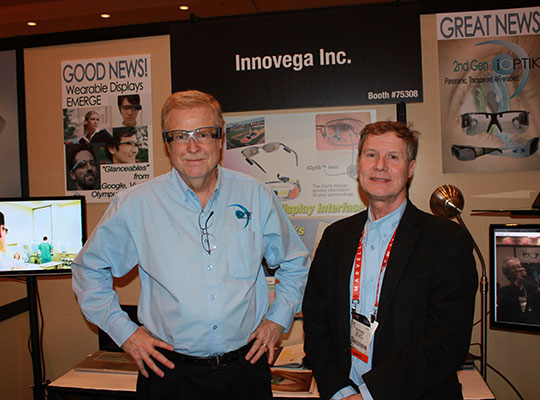
CES 2013 »
iOptik, a proprietary contact lens technology from Innovega.
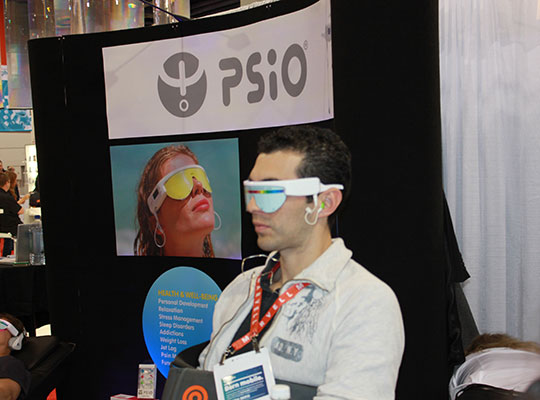
CES 2013 »
PSiO's Mind Booster stress management glasses.
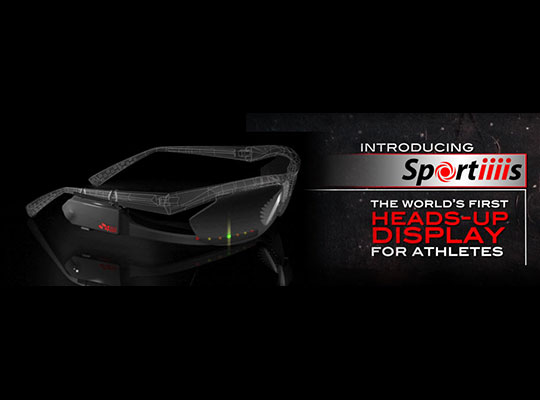
CES 2013 »
The Sportiiiis system from 4iiii, an eyewear-mounted system which provides athletes with performance feedback without distracting from their activity.
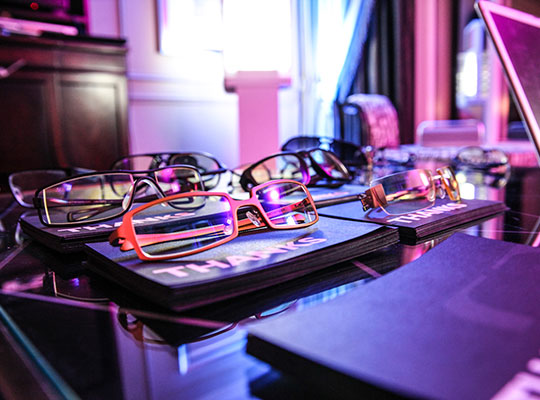
CES 2013 »
Gunnar Optiks' Crystalline lens, which the company is specifically marketing to digital artists.
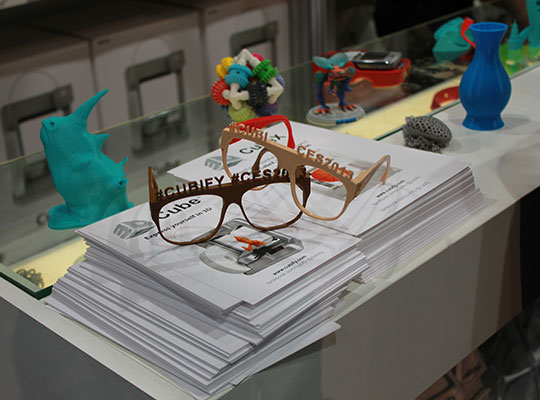
CES 2013 »
3-D printed eyeglasses from Cubify.
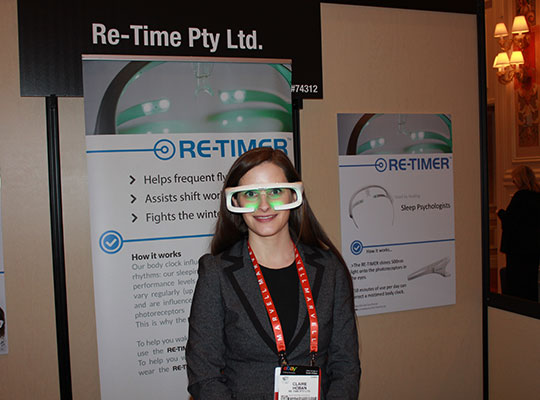
CES 2013 »
Re-Timer, a lightweight eyewear device that resets the body's internal clock.
|
The Vision Council was on hand to help digital device users protect their eyes from digital eye strain, a growing health concern for avid electronic consumers. The organization's booth featured the latest digital device accessories, as well as new computer eyewear technology from its members. Visitors to the Vision Council booth could also learn about the key findings from the Council's recent digital eye strain report, Screens, Phones, Tablets and More: Keeping Your Eyes Safe in a Digital Age.
Justin Bazan, OD, a medical adviser to The Vision Council, participated on a Digital Health Summit Panel on Thursday. He was joined by experts from ClearSounds Communications, Valencell, Inc., hi HealthInnovations and the Digital Health Journal to discuss "Health Tech from the Neck Up." The 45-minute session explored digital health innovations for hearing loss, vision loss and neuroscience and discuss how these technology solutions are being perfected to address key needs in our society.
Bazan noted that the increasing use of smart phones, tablets and other digital devices among young people is resulting in the earlier onset of presbyopia. "It used to be that you'd need reading glasses starting at about age 45, but now that's shifting to 30," said Bazan.
In another panel discussion, Ami Dror of XPand 3D, Jim Sheedy, OD of Pacific University's Vision Performance Institute and Michael Duenas, OD of the American Optometric Association explored the clinical aspects of 3D vision.
Other new eyewear technology sighted at CES included the latest 3D glasses, eye tracking systems for controlling computers and wearable computers featuring head-mounted displays.
Watch Part One of a video interview (below) with Andrew Karp discussing new vision technologies with Review of Optometric Business.
Vuzix Smart Glasses M100 Turns Heads at CES
While the world waits for Google to introduce Project Glass, the company's futuristic, head-mounted, wearable computer,
Vuzix Corp. is already turning heads. The company's sleek new Smart Glasses M100, pictured at right, was selected as an Innovations 2013 Design and Engineering Best of Innovations honoree at this month's Consumer Electronics Show in Las Vegas and picked as the best new technology in the Wireless Handset Accessories product category. In addition, Vuzix Smart Glasses also received the honoree distinction in the Personal Electronics category.
"We are honored to win this Innovation Award, our first Best Of Innovations among a competitive field of great inventions," said Vuzix CEO Paul J. Travers. "While we have consistently delivered new technology each year to our customers, the Vuzix M100 represents our most significant breakthrough yet in design and capability. We believe Vuzix Smart Glasses will have wide reaching impact on the way we use mobile devices."
Vuzix describes Smart Glasses M100 as "the world's first enhanced 'hands free' display and communications system for on-the-go data access from your smartphone and the Internet." It contains a virtual display with integrated camera and powerful processing engine, running an Android OS. It connects wirelessly via Bluetooth or Wi-Fi to your smartphone (iOS or Android) or other compatible device. Powerful enough to connect to the Internet, run applications and games on its own, the M100 works in conjunction with a smartphone to offer existing and future applications such as texts, video, email, mapping, and audio.
As a hands free accessory with AR (Augmented Reality) camera/display functionality, Vuzix Smart Glasses let you do things like answer the phone with a visual address book, while enabling applications from reading text messages and email to visual navigation. More advanced features such as basic augmented reality applications are also offered. Vuzix Smart Glasses, M100 include an integrated head tracker and GPS for spacial and positional awareness and an integrated camera enables video recording and still image capture. The interactive tracking and integrated camera combined with applications on the M100 and a smartphone linked to the Cloud, allow for the merging of virtual information with the real world.
"Running the Android OS enables application downloads directly into Vuzix Smart Glasses M100," said Travers. "This flexibility is going to open up many amazing new solutions for our users from advanced HUD navigation applications to gaming. Not only are Vuzix Smart Glasses M100 a great hands free solution, but finally there is a platform that is designed specifically for the growing augmented reality markets. Enabling hands-free access to applications from visual search to derivatives of mapping street views—all will finally be available in a pair of Vuzix Smart Glasses."
Earlier this month, Vuzix begun shipping Phase1of its SDK (Software Development Kit) for the recently unveiled M100SmartGlasses—enabling developers to start developing and testing their apps using the Android emulator configured as an M100 device.